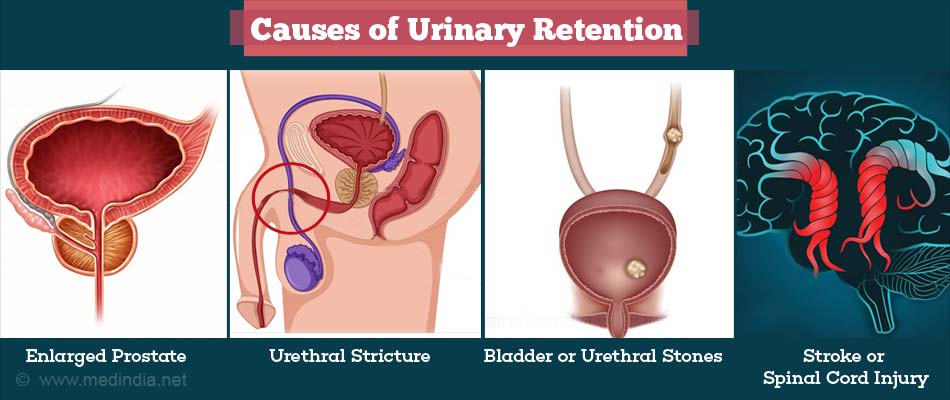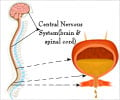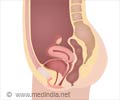- Mevcha A, Drake MJ. Etiology and management of urinary retention in women. Indian J Urol. 2010 Apr-Jun; 26(2): 230–235. Doi: 10.4103/0970-1591.65396
- Baldini G, Bagry H, Aprikian A, Carli F. Postoperative Urinary Retention: Anesthetic and Perioperative Considerations. Anesthesiology 5 2009, Vol.110, 1139-1157. doi: 10.1097/ALN.0b013e31819f7aea
- Urinary Retention - (https://www.niddk.nih.gov/health-information/urologic-diseases/urinary-retention)
What is Urinary Retention?
Urinary retention is a condition where a person is unable to voluntarily empty the urinary bladder completely. It may happen suddenly in an elderly male due to an enlarged prostate or in a young male due to stricture of the urethra or due to a stone in the bladder. Occasionally there maybe chronic retention of urine due to again an enlarged prostate gland.
Function of Kidney and Bladder - The nitrogenous waste products produced by the body during the breakdown of proteins like urea, uric acid and creatinine are filtered from the blood by the kidneys, and along with water and salts, form urine. The urine is temporarily stored in a muscular pouch called the urinary bladder, which can hold around 400 to 600ml in an adult. The outlet of the bladder, called the urethra, is controlled by two sphincters, the internal and external urethral sphincters (circular muscles surrounding the urethra) that prevent the continuous dribbling of the urine.
When the bladder is full, it sends signals to the brain via nerves, resulting in the urge to pass urine. However, as the external urethral sphincter muscle is under voluntary control, it will not relax until the person is in a socially acceptable situation, enabling passage of urine.
The synergistic contraction of the bladder and the relaxation of the sphincters is under the control of nerves connected to the lower spinal cord. Among the involuntary nerves, the parasympathetic nerves contract the bladder and relax the sphincters, thereby allowing the emptying of the urine, while the sympathetic nerves inhibit the bladder contraction and tighten the sphincter, thereby preventing in passage of urine when it is not convenient.
Thus, for the complete emptying of the urinary bladder, the following are important:
- There should be no obstruction to the passage of urine
- The bladder should undergo a sustained contraction so that all the urine collected in the bladder gets evacuated
- The contraction of the urinary bladder and the relaxation of the sphincters should be a synergistic process
What are the Types of Urinary Retention?
Urinary retention can be classified as:
Acute urinary retention, which is an emergency situation where the patient presents with a sudden inability to pass urine and pain. Conditions that can trigger acute urinary retention include surgery, a urinary tract infection, excessive fluid intake or the use of certain medications. It is more common in men and often due to untreated enlargement of the prostate.
Chronic urinary retention, which is a painless condition present over a longer duration. The patient may experience dribbling of the urine once the bladder is full. Sometimes, the patient may not notice the chronic retention, and therefore, it is necessary for the doctor to suspect the condition before it can cause complications including kidney failure.
Sometimes, the patient may pass urine partially and some urine may remain in the bladder; this remaining urine in the bladder due to incomplete evacuation is called post-void residual urine.
Urinary retention may also be classified as:
- Complete or partial, depending on the degree of retention
- Obstructive or non-obstructive, depending on whether an anatomical obstruction exists that stops the passage of urine
- High or low pressure, depending on the pressure generated in the bladder
What are the Causes of Urinary Retention?
Urinary retention may occur due to the following:
- Obstruction to the passage of the urine
- Lack of contraction or sustained contraction of the bladder muscle, called detrusor underactivity
- Problems in the nerve function that coordinate the bladder contraction and sphincter relaxation
The causes of urinary retention include the following:
- Obstruction: The obstruction to the urinary flow may be present within the urinary tract (intrinsic causes) or outside the urinary tract (extrinsic causes)
Within the Urinary tract or Intrinsic causes include:
- Narrowing of the urethra, called urinary stenosis or stricture. It is commonly caused by infection or injury to the urethra
- Bladder or urethral stones
- Bladder tumor near the bladder opening
- Large Cystocele, which is an out pouching of the urinary bladder into the vagina in females
- Congenital causes like the presence of anterior or posterior urethral valves at birth
Extrinsic causes include:
- Enlargement of the prostate in males which may be benign or due to cancer. The prostate surrounds the upper part of the urethra and can press and narrow the urethra
- Rare Causes:
- Pelvic organ prolapse
- Benign or malignant tumor in the pelvic region
- Constipation; the accumulated feces can exert pressure from outside
- Large Fibroids in females
The bladder tries to contract against the obstruction, and in due course, the tone of the bladder may reduce, thereby making it flaccid
Infection and inflammation: Infections that affect the genitourinary tract can cause urinary retention due to obstruction or scarring. These include:
- Prostate abscess in males
- Vulvovaginitis in females
- Tuberculosis of the urinary bladder
Neurologic cause. Conditions that affect the brain, spinal cord or the nerves that can cause urinary retention include:
- Stroke
- Injuries to spinal cord
- Multiple sclerosis
- Diabetes mellitus reduces bladder contraction and also affects nerves, which can result in urinary retention
- Diabetes that affects the peripheral nerves
- Injury to the peripheral nerves that connect the bladder to the central nervous system
- Spina bifida in children, which is a congenital condition that affects the spinal cord
Intake of medications: Medications that can cause or contribute to urinary retention include the following:
Anticholinergic drugs like atropine and glycopyrrolate and antispasmodics like oxybutynin and hyoscyamine. These drugs block the effect of the parasympathetic system, which is involved in the voiding process. Other drugs with anticholinergic action that can also cause urinary retention include antihistamines like chlorpheniramine and diphenhydramine, and tricyclic antidepressants like amitriptyline and imipramine
- α1 receptor agonists which include decongestants like ephedrine and pseudoephedrine. These promote the effect of the sympathetic nervous system on the lower urinary tract, which causes urinary retention
- Drugs used in anesthesia which include pentobarbital, propofol, halothane, isoflurane, methoxyflurane
- Muscle relaxants like diazepam and baclofen.
- Opioid analgesics like morphine and pethidine
Others:
- Diabetes mellitus reduces bladder contraction and also affects nerves, which can result in urinary retention
- Older age reduces the contraction capacity of the urinary bladder

What are the Symptoms and Signs of Urinary Retention?
The symptoms and signs of urinary retention include the following:
- An inability to pass urine despite feeling the urge
- Pain, discomfort and bloating in the lower abdomen in acute cases. The severe pain can cause vomiting, reduced heart rate, changes in blood pressure, and heart rhythm abnormalities
- Tapping over the lower abdomen may elicit dull sound due to the fluid-filled bladder
- Difficulty in starting a urinary stream
- Reduced urinary flow, prolonged flow, hesitancy and intermittency while passing urine in chronic cases
- Sensation of incomplete bladder emptying after passing urine
- Increased frequency of passing urine due to incomplete emptying. The person may feel like passing urine shortly after emptying the bladder
- Urinary incontinence, especially at night
Symptoms may be associated with complications arising from the urinary retention, which may include:
- Urinary tract infection
- Bladder stones
- Swelling of the kidney called hydronephrosis
- Kidney failure

How do you Diagnose Urinary Retention?
Urinary retention is diagnosed based on:
- The history obtained from the patient or the caregivers. The history should specifically include the intake of medications by the patient
- A general, abdominal and pelvic examination, as well as a neurological examination to ensure the proper functioning of nerves that control the lower urinary tract.
- Bladder catheterization. The doctor may introduce a catheter and collect the urine after the patient passes urine to determine the post-void residual urine. Excessive urine in the bladder after emptying indicates incomplete emptying.
- Tests used in the diagnosis of urinary retention may include:
- Blood tests: Blood tests to measure parameters like urea, creatinine and electrolytes in the blood to assess kidney function
- Urine tests: The urine should be checked for the presence of infection through microscopic examination and culture and sensitivity testing
- Radiological tests: These include the following:
- Ultrasound is a safe and painless test which can determine
- The amount of urine present in the urinary bladder
- The amount of urine that remains in the bladder after emptying, called post void residual urine
- Conditions in the pelvic region like a prolapsed uterus that can cause the urinary retention
- A CT scan can diagnose conditions like bladder stones, tumors or injuries in the lower abdomen that may cause the urinary retention
- Urodynamic tests: Urodynamic tests are carried out as the patient is made to pass urine in order to study the stream and look for any abnormalities. These include the following:
- During uroflowmetry, the patient is asked to pass urine and a special equipment measures the amount of urine and the flow rate
- A pressure flow study measures the pressure generated in the urinary bladder while passing urine, with the help of a manometer inserted into the bladder with a catheter
- In video urodynamics, video images are obtained using x-ray or ultrasound while the patient passes urine or contrast medium that is inserted into the bladder.
- Electromyography: Rarely an electromyography is done. The test measures the electrical activity in the bladder muscle and the sphincters, and the nerves supplying the bladder and the sphincters through sensors on the skin near the urethra or rectum, or a catheter inserted into the rectum or the urethra. It helps to study the nerve-muscle function and co-ordination during the process of micturition and identify any functional abnormalities
- Cystoscopy: Cystoscopy is a test where a tube with a camera at the end is inserted through the urethra into the urinary bladder to study any structural abnormalities that could lead to urinary retention. Conditions like urinary stones or small tumors in the bladder that may be causing the retention can also be treated during the same procedure
How do you Treat Urinary Retention?
Acute urinary retention is a medical emergency and should be treated with immediate catheterization. Catheterization is a procedure where a tube is inserted through the urethra into the urinary bladder so that the urine drains out.
- Normally an indwelling catheter can be inserted in the bladder so that urine can drain out continuously into a bag, called continuous catheterization, till the problem is solved.
- Catheterization should be done with extreme care and with aseptic precautions to avoid complications like infections, trauma to the urethra or prostatitis along with discomfort to the patient.
- In some cases where it is not possible to insert the catheter through the urethra, it may be inserted directly into the urinary bladder through an incision in the lower abdomen
Treatment of the underlying cause usually provides relief from urinary retention. For example:
If the urethra is narrow, dilatation may be carried out with the help of successively larger tubes or by inflating a balloon at the end of a catheter. The doctor may sometimes make a small cut on the inner side of the urethra with a small knife or a laser to widen it. A stent may also be placed to facilitate the passage of the urine.
Benign prostatic enlargement may be initially treated with medications, and if required, through surgery. Prolapse of the uterus may also require surgical repair
Any complications associated with the retention should also be treated. Urinary tract infection, if present, should be treated with antibiotics
If the retention is due to an underactive bladder that does not contract the patient may have a high residual and chronic retention. In this situation an intermittent catheterization is advised and the patient can be trained to it himself. This is done 2 to 5 times a day depending on the volume of urine that is left in the bladder. Special catheters are available and training by a doctor or nurse is required.

How do you Prevent Urinary Retention?
- One may not be able to prevent urinary retention. However certain lifestyle practices may help
- Drugs that cause urinary retention should be avoided, especially in individuals prone to the retention such as the elderly or in diabetes
- Constipation can be avoided with high fiber food, adequate water and exercise
- Any disease condition that can cause urinary retention should be treated at the earliest








